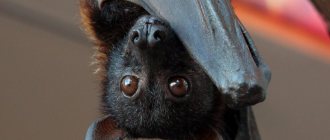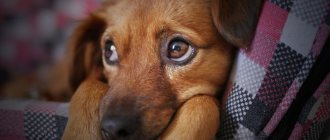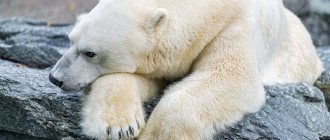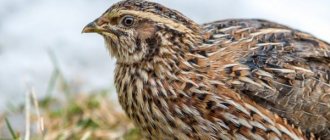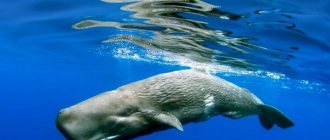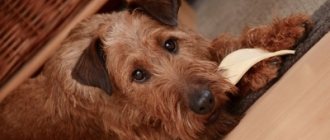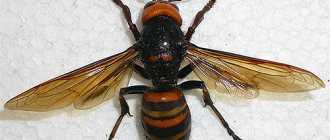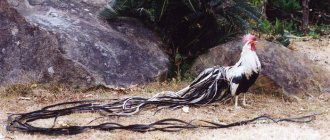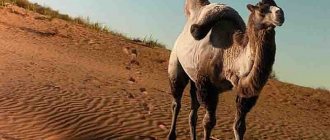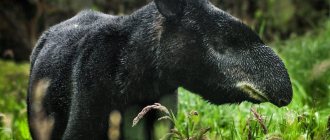You may not know this, but there are many animals that are able to float in the air and at the same time do not have the ability to fly.
True flight is when an animal can move through the air without assistance, even for a long time. For an animal to fly, it must have wings. Living organisms that can truly fly are able to control their direction, speed, and altitude as they move through the air. These animals include: birds, insects and bats.
But there are also some animals that can float through the air. It is similar to flying, but with less control, shorter duration and shorter distances. These animals use certain body parts to help them float through the air.
In this article, you will learn about 9 representatives of the animal kingdom that defied the laws of gravity.
wild turkey
Wild relatives of domestic turkeys can fly, although for short distances, but at high speed. Zoologists have determined that they are capable of speeds of up to 90 km/h. The forests of North America became the habitat for the settlement of amazing representatives of the pheasant family.
Wild turkeys live on tree branches, which means they somehow get there. But their domestic relatives have lost the ability to fly, as farmers, through long selection, created massive breeds. Large body volumes prevent them from getting off the ground and taking off.
2
How do they reproduce?
Due to the secretive lifestyle of bats, scientists were only able to collect general information about their reproduction.
Bats living in warm latitudes are more fertile, as they bear offspring twice a year. Bats that live in temperate climates mate only once a year before going into hibernation. In such subspecies, embryo development is delayed. The duration of pregnancy largely depends on the ambient temperature. At a time, a bat brings from one to three babies.
How they are born
Baby bats are born with their hind legs first, which is very rare for mammals. Before giving birth, the female turns her head up until the baby emerges. Once born, the baby spends a week in the mother's tail pouch. Then the female looks for shelter and hides the brood there, periodically flying up and feeding the children with milk. A baby bat becomes independent within a month.
Flying kites
Don't be surprised, but some species of snakes have learned to fly superbly. These reptiles live in Southeast Asia. As a rule, they are not dangerous to humans, since the poison is only enough to harm small prey.
Flying snakes do not fly, but rather glide through the air, flattening their body into a kind of wing. While gliding, they make wave-like lateral oscillations, which ensure their stable flight. Snakes can fly up to 100 meters and do not crash on the ground, no matter how high they slither.
3
Black-footed copepods
Aerial gliding has evolved at least twice among families of tree frogs, and some species have learned impressive aerial maneuvers such as turning and yawing. Frogs have acquired these abilities through enlarged toes, which can act as parachutes or wings when the animal moves its limbs while jumping.
Flight also gives tree frogs an advantage. Since they live in trees most of the time, they can glide between them and not go down to the ground.
Aerial spiders
The editors of most-beauty feel uneasy towards representatives of this order of arthropods. We have written about them more than once in our articles. Spiders don't have wings, which is why many people will say that they can't fly. But some spiders have become adept at using their webs to travel long distances.
In tropical forests, spiders flying on their webs are a rather fascinating and even frightening sight. They catch gusts of wind and are able to travel long distances on their web. Sometimes females make a special cocoon in which they lay eggs, and migrate with the wind to areas where offspring will appear.
4
Types of air locomotion
Aerial locomotion in animals can be divided into two categories - with and without the application of force. In locomotion without the application of force, the animal uses aerodynamic forces that act on the body due to the wind or falling in the air. In powered flight, the animal uses muscle power to generate aerodynamic forces. Animals that use aerial locomotion without force are unable to maintain altitude and speed due to an inability to counteract air resistance and gravity; animals that use powered flight can maintain stable flight at the same altitude as long as their muscles are able to withstand the load.
Air locomotion without force
This type of locomotion typically requires the animal to start from a high position, allowing the potential energy of altitude to be converted into kinetic energy and the trajectory and angle of descent to be controlled by aerodynamic forces. Energy is constantly wasted in aerodynamic drag and is not replenished, so these methods of locomotion have limited distance and duration.
- Free fall: a decrease in altitude under the force of gravity, without the use of any adaptive mechanisms to increase aerodynamic drag or provide lift.
- Parachuting: falling at an angle greater than 45° to the horizon with adaptive mechanisms to increase aerodynamic drag. Very small animals can be carried by the wind. Some animal gliders may use their glider membranes for aerodynamic drag rather than lift to descend safely.
- Glide flight: fall at an angle of less than 45° to the horizontal with lift from adapted aerodynamic membranes. This allows horizontal movement of a slow fall, with body tension leading to increased efficiency of the flight membrane, and often with a degree of maneuverability in the air. Animal gliders have less relative wing aspect ratio than true flyers.
Flight with force
Powered flight has evolved only 4 times (birds, bats, pterosaurs and insects) and uses muscular power to generate aerodynamic forces and replace energy lost to aerodynamic drag.
- Flapping: The movement of wings to directly create propulsion. Flying animals are able to rise in the air without the help of wind, unlike animals that use gliding and parachuting.
Air locomotion with application of external force
The spider's flight and soaring occur not due to the work of muscles, but due to external aerodynamic energy sources: wind and updrafts, respectively. Both can continue as long as a source of external energy is present. Soaring, as a rule, is characteristic only of animals capable of full flight, since it requires a very significant wingspan.
- Spider flight: carried in the air by the aerodynamic effect of long web threads in the wind. Certain arthropods that produce webs, mainly small or young spiders, secrete a special lightweight graceful form for flight, and sometimes thus travel long distances at quite significant altitudes.
- Hovering: Gliding in updrafts or otherwise moving air requires physiological and morphological adaptations that help keep the animal aloft without moving its wings. Updrafts of air form through thermal columns, oblique hovering, or other meteorological features. Under certain conditions, hovering makes it possible to lift without wasting its own energy, but a large wingspan is required for effective hovering.
Many species use different types of locomotion at different times; this is how the hawk uses flight with added power when taking off, then soars on updrafts, then falls freely when it catches its prey.
Flying squid
It seems strange that an animal living deep underwater can fly, but some representatives of the Ommastrephidae species have acquired such a unique ability. Because of this, in the scientific world it was aptly called the flying squid.
There are “flying squids” off the coast of Japan. Studies have shown that some species can soar above water at a speed of 11.2 meters per second over a distance of 30–40 meters. Squids emerge from the water and then spread their fins. The tentacles become vertical, creating aerodynamics. Why do they need this? The main hypothesis put forward by scientists is that this is how the squid escapes from being pursued by predators.
5
Animal world → Can mammals fly and which ones can’t jump?
The only mammals that are truly capable of flight are bats (order Chiroptera, consisting of 986 species). Other animals that can soar in the air (for example, the flying squirrel and the flying lemur) are often called “flying.” The "wings" of a bat are a double leathery membrane that extends along the sides to the hind legs and tail; in fact, these are outgrowths of the skin of the back and abdomen. The front part of the wings is supported by elongated fingers of the forelimbs (“hands”). Bats inhabit most of the tropical and temperate zones in both hemispheres. They are nocturnal and live in caves or crevices; the size of these animals varies from 2.5 to 40.6 cm in length. Most species feed on insects and fruits; some tropical species feed on pollen and flower nectar. Medium-sized bats hunt small mammals, birds, lizards and frogs, and some eat fish. Among bats, there are three species of vampires that feed on the blood of animals by making a cut in their skin; these species can serve as carriers of rabies. Most bats navigate in flight not using vision, but using an echolocation system that allows them to determine the location of solid objects. An animal in flight produces sounds through its nose or mouth, the frequency of which, as a rule, is outside the auditory range of humans. Sound waves bounce off objects, returning as echoes. Thanks to this method, a bat in the dark not only avoids collisions with objects, but also determines the location of flying insects. The hearing of chiropterans is sharper than that of any other land animals; they even perceive sounds with a frequency of 120-210 kilohertz. The maximum frequency perceived by the human ear is 20 kilohertz.
What mammals can't jump? It is not surprising that elephants and rhinoceroses cannot jump; this is due to their enormous weight. But, oddly enough, the third species of mammal that is not capable of jumping is the pronghorn, or pronghorn antelope. This feature is very disadvantageous for an animal living in North America, where numerous fences prevent the migration of populations and limit the possibilities of interbreeding.
Which mammal has the shortest gestation period and which has the longest? Pregnancy in viviparous animals is the period of time between fertilization and birth. The shortest established duration of pregnancy is 12–13 days. It is characteristic of three representatives of marsupials: the American possum ( Didelphis marsupialis ), the water possum ( Chironectes minimus ), which lives in central and northern parts of South America, and the spotted marsupial marten ( Dasyurus viverrinus ), which lives in Australia. The cubs of these animals are born immature, and their further development occurs in a special “pocket” on the mother’s belly. The duration of pregnancy is 12-13 days, which is average; sometimes it lasts only 8 days. The longest pregnancy lasts in the African elephant ( Loxodonta africana ): the average duration is 660 days, and the maximum is 760 days.
There are no similar articles.
Draco Lizards
They are called flying dragons, and their closest relatives are iguanas. Small lizards are able to expand their ribs and peculiar membranes located on the sides of the body, so they create peculiar wings that help them soar through the air.
Developing great speed, they can glide over a distance of up to 50 meters. They move from tree to tree, hiding from numerous predators. This ability is used to find food themselves, as well as during the mating season in search of a mate.
6
Chiroptera
Of course, the first animals that come to mind when we think of flying mammals are bats and fruit bats. Representatives of the order Chiroptera are the only mammals capable of truly long-term flight. There are about 1,300 species of bats, which make up almost 20% of all living mammal species.
Didn't find what you were looking for? Use the site search form
Flying fish
The waters of the world's oceans are home to forty species of fish, which in the course of evolution have acquired the ability to fly over the water surface. They literally push themselves out of the water and soar, capturing the imagination of sailors and tourists passing by.
Flying fish jump out of the water and hover to avoid predators. Wing-like fins help them glide through the air. They live in the Caribbean region, and the length of the flight depends on the species. Some soar to a distance of 90 meters, and there are record holders who easily overcome distances of up to 400 meters.
7
Limits and records
Polt/hover
- The largest. Previously, Pteranodon, a pterosaur with a wingspan of up to 7.5 meters, was considered the most flying animal. However, a pterosaur from the azhdarchid family Quetzalcoatlus was recently found with a significantly larger wingspan (estimated at 9-12 meters). Some other pterosaurs of the genus, for example. Hatzegopteryx may have had the same or greater wingspan. Heavy living flying animals are the Kore Bustard and the Great Bustard, whose males can weigh up to 21 kg. The wandering albatross has the largest wingspan of any living flying animal (3.63 m). Among animals that fly over land, the Andean condor and African marabou have the largest wingspan (3.2 m).
- Small ones. There is no minimum size to get airborne. For example, there are a lot of bacteria flying in the atmosphere, which form part of the aeroplankton. However, in order to move under its own power and not be overly dependent on the wind, a certain size is needed. The smallest flying vertebrates are the bee hummingbird and the bumblebee bat, each of which can weigh less than 2 g. They are thought to represent the lower limit of endothermal flight.
- Fast. The fastest known flying animal is the peregrine falcon (it has been recorded that when diving it reaches speeds of more than 300 km/h. The fastest flight with flapping wings is probably that of the great swift (up to 170 km/h) or the middle Krekhov (160 km/h) .
- Slow. Most flying animals need to move forward at a certain speed to stay in the air. However, some species can “hover” at one point, either by quickly flapping their wings, like hummingbirds, hoverflies, heteroptera and some other species, or by precisely using updrafts, like some birds of prey. Slow flight (not “hovering”) has been recorded in the American woodcock (8 km/h). However, many insects probably fly more slowly.
- The highest fly. A documented case of a Great African Vulture (Gyps rueppelli) being sucked into an aircraft engine at an altitude of 11,550 meters above Côte d'Ivoire. An animal that regularly flies higher is the mountain goose (Anser indicus), which migrates directly across the Himalayas between mating grounds in Tibet and wintering grounds in India. We saw them flying over the top of Chomolungma (8848 m.a.s.l.).
- The most maneuverable. A number of animals are known for their agility. Animals that can hover tend to be agile, able to both stay in place and move in all directions. Bats and crows are also known for their aerial acrobatics.
Gliding/parachuting
- The most effective planer. Defined as the animal that glides the greatest horizontal distance per meter of fall. It is known that squirrels can glide up to 200 meters, but their gliding coefficient is only 2. Flying fish, after an initial jump from the water to a height, can glide hundreds of meters in aerodynamic force at the edge of the waves, but perhaps they receive additional lifting force from the movement of waves. But Albatrosses have a confirmed lift to aerodynamic force ratio of 20, that is, they fall only 1 meter for every 20 meters of horizontal glide.
- The most maneuverable glider. Many glider animals can return, but it is difficult to determine the most maneuverable one. According to observations, even the flying snake of paradise, Chinese flying frogs, and gliding ants have a significant ability to turn in the air.
flying squirrel
In order to soar magnificently through the air, flying squirrels have everything they need. First, there is the flight membrane, which runs from the front to the hind limbs. Secondly, the tail, which is used as a brake and flight stabilization.
During their soaring from tree to tree they look like a hang glider. They live in the dense forests of the Northern Hemisphere. They usually rest in their nests during the day and are active at night.
Squirrels grow no more than 22 cm in length, but they can glide with the help of their unique parachute at a distance of up to 170 meters.
8
Marsupial flying squirrels
Although they are often confused with flying squirrels, marsupial flying squirrels are marsupial mammals that evolved their furry membranes independently of squirrels. Some species, such as the sugar glider, have become popular exotic pets. Like other marsupials, these animals can only be found in Australia and New Guinea, where most species are endangered.
Ants
Hardworking insects acquire a pair of wings only at a young age and only during the breeding season. The ability of forest inhabitants to fly was discovered relatively recently, in 2005. but not all representatives of the huge family acquired this ability during evolution.
The ability to fly helps ants not only during the mating season, but also in life. Zoologists have proven that when migrating, ants can easily later find their tree on which the colony lives. For example, in the Amazon forests, the ability to soar saves ants from falling into the water, where natural enemies lie in wait for them.
9
Where do these birds nest?
Any migratory bird: duck, goose or swan migrates as the food “goes away”. The birds' diet consists mainly of green grass, which is impossible to obtain in the continental zone in winter. As the greenery fades, and closer to autumn even the leaves turn yellow, migratory wild birds gradually move to a warmer place. The flock does not wait for the sharp cold weather.
Wherever mountain or field ducks live, closer to September they leave the nests. The usual habitat of ducks is open areas; sometimes a group of ducks can be found in mountainous areas near open water bodies.
River birds live near populated areas; flocks of wild ducks are rarely found in the city, only during migration. The lifestyle requires solitude, so members of the flock look for places where reeds or tall grass grow. The shore is an ideal nesting haven for them, and access to clean water simplifies the process of feeding and caring for future offspring.
A closed lifestyle in a noisy city is impossible, so not every city resident manages to spot a flock between concrete pillars. Females, especially those who will soon nest, constantly hide in the reeds. Open areas are not suitable for duck nesting.
The migratory duck is unpretentious in food; its diet consists of the most common food in natural conditions:
- insects (flies, mosquitoes, beetles);
- frogs, but only small ones;
- fish (a duck cannot handle large fish);
- tadpoles.
The special filtration system of the duck's beak makes it possible to purify food and water. The mallard provides security for the entire flock. If the reservoir is located directly in the city, where a person feels confident, the birds do not stay near the settlement for long. The physiological characteristics of their bodies do not allow ducks to winter within the boundaries of St. Petersburg or any other metropolis with low temperatures in winter. Warm region: Africa, India or the sea coasts are more suitable areas for winter nomadic birds. Where the bird will stop is a mystery for which man has not yet found an answer.
Flying frogs
The tropical forests of Southeast Asia are home to a special species of frog called copepods. The special structure of their paws allows them to glide through the air over fairly long distances.
The largest of this family is the Chinese copepod, which, despite its large size, easily glides between the branches of tropical trees. With membranes on their front and hind legs, they can control upward currents, thereby freely floating through the air. Most-beauty.ru has a very interesting article about the most beautiful frogs in the world.
10
Seagulls
Herring gull
Seagulls are large white or gray birds. Apart from kittiwak, gulls usually live near the coast or inland, rarely venturing far out to sea. They have a very varied diet, catching crabs and fish in shallow waters, as well as insects, worms, eggs, small mammals, seeds, fruit and human waste.
Best articles: Where is the Celtic Sea located on the world map?
Seagulls take and steal food from other birds. May loosen their jaws, allowing them to eat larger foods. There are more than 50 species of gulls, including the herring gull and the black-headed gull. Seagulls gather in large colonies for nesting. Often exhibit what is called "mobbing behavior" - attacking potential predators and other attackers.
Fun fact: seabirds consume large amounts of salt when they drink and feed. To remove excess salt, they have a special gland above their eyes that releases salt water. She runs along their beaks and runs away.
Mobula
Photo source: Nick Bonzey from Corvallis, OR, CC BY-SA 2.0, via Wikimedia Commons
The inhabitants of the deep sea are the only ones of all the vertebrate inhabitants of the planet that have three pairs of active limbs. They are similar in appearance to stingrays, but with a special body structure. These structural features will allow them to float above the water.
Mobulas are excellent swimmers, but if necessary, they emerge from the water column and soar. The flight length is small, only up to 3 meters, but it is a very fascinating sight. Scientists cannot explain this behavior, but most likely it happens to attract attention. Males soar, but sometimes females join them.
